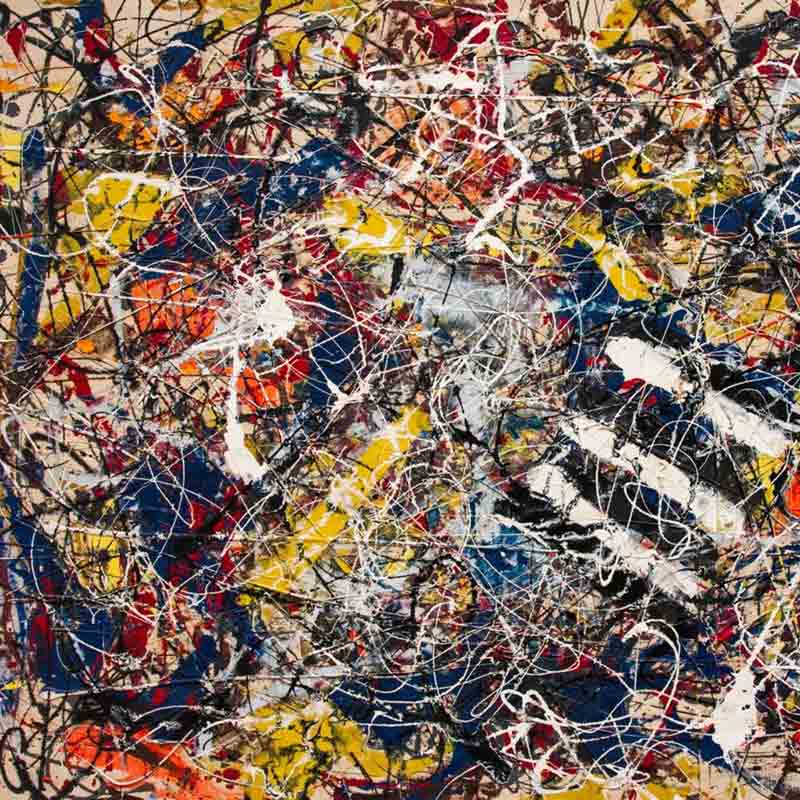The realms of visual art and music have always found ways to intertwine and inspire one another. This connection is beautifully exemplified by the legendary abstract expressionist painter Jackson Pollock and the groundbreaking jazz musician John Coltrane.
Pollock's iconic painting "Convergence" and Coltrane's revolutionary composition "Giant Steps" share a profound artistic kinship, as the frenetic energy and boundless creativity of one art form inspire and converge with the complexities of the other. In this blog, we explore the captivating synergy between Pollock's masterpiece and Coltrane's musical tour de force.
The Intricate Web of Expression
Jackson Pollock, hailed as a pioneer of abstract expressionism, brought forth his unique artistic vision through his painting "Convergence." The canvas becomes a symphony of intricate and chaotic web-like paint drips and splatters, carefully orchestrated by Pollock's intuitive movements. Every stroke and splash holds a purpose, combining to create a dynamic composition that seems to burst with raw energy and passion.
Coltrane's "Giant Steps" A Musical Revolution
In the realm of jazz, John Coltrane's "Giant Steps" stands as a monumental composition that pushed the boundaries of harmonic and improvisational exploration. Released in 1960, this iconic jazz piece revolutionized the genre with its rapid chord changes and complex harmonic structure. Coltrane's masterful saxophone improvisations weave a tapestry of intricate melodies, offering a sense of controlled chaos and captivating the listener with its intensity and technical brilliance.
Convergence, Mirroring Complexity and Energy
When observing Pollock's "Convergence" alongside Coltrane's "Giant Steps," it becomes evident that the two works share an inherent connection. Pollock's unbridled use of paint drips and splatters aligns with Coltrane's approach to music, where the intricate melodies and complex improvisations seem to cascade and intertwine with one another. The seemingly chaotic yet purposeful nature of Pollock's painting reflects the frenetic energy and avant-garde spirit of Coltrane's composition.
Both artists pushed the boundaries of their respective mediums, employing a level of complexity and experimentation that challenged traditional norms. Pollock's method of "action painting" and Coltrane's innovative use of chord progressions and harmonic concepts showcase their shared commitment to artistic exploration and breaking free from conventional constraints.
A Visual Representation of Rhythmic and Harmonic Complexity
"Convergence" captures the essence of "Giant Steps" in visual form, inviting viewers to experience the rhythm and harmony of the music through Pollock's dynamic brushwork. The intricate layers of paint mirror the intricate chord changes and rhythmic patterns found in Coltrane's composition. Each drip and splatter echoes the improvisational brilliance of Coltrane's saxophone, creating a visual representation of the rhythmic and harmonic complexities that define "Giant Steps."
The enthralling convergence of Jackson Pollock's "Convergence" and John Coltrane's "Giant Steps" highlights the profound interplay between different art forms. Pollock's abstract expressionist masterpiece serves as a visual counterpart to Coltrane's groundbreaking jazz composition, allowing us to witness the harmonious fusion of artistic expression.
The chaotic yet purposeful nature of Pollock's painting beautifully captures the frenetic energy and boundless creativity found in Coltrane's music. Together, these works inspire us to embrace the limitless possibilities of artistic expression and appreciate the profound connections that exist between various art forms.




Share:
Tube Amp vs. Solid-State Decision: Understanding the Differences
Art of Listening with the Exposure 360 Turntable